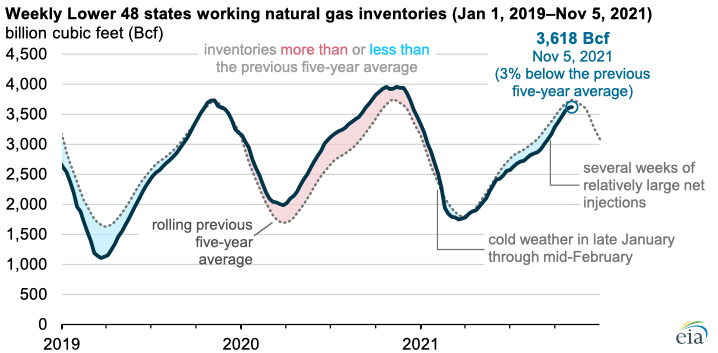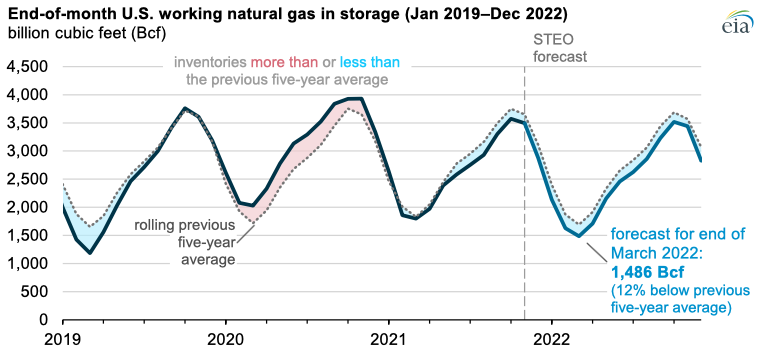As we enter winter, working natural gas in underground storage facilities in the Lower 48 states measured 3,618 billion cubic feet (Bcf) on November 5, according to our Weekly Natural Gas Storage Report released on November 10. The amount of natural gas in storage has been below its previous five-year average since mid-February of this year. Storage levels approached average in late October and early November, the time of year when inventories are typically at their highest and when natural gas begins to be withdrawn as demand rises with colder weather.

The amount of working natural gas in storage in the Lower 48 states reached its lowest point in 2021 at 1,760 Bcf, or 4% below the previous five-year average, on March 15, following a period of significantly cold weather in late January through mid-February. Less natural gas was in storage than the previous five-year average for every week through the spring and summer because of the low inventory at the beginning of the injection season, relatively high natural gas consumption in the electric power sector, and relatively high volumes of natural gas exports. By mid-September, storage levels were 7% below the five-year average. More recently, eight consecutive weeks of relatively large net injections narrowed the gap with five-year average inventories to 3% as of November 5.

Principal contributor: EIA Staff








